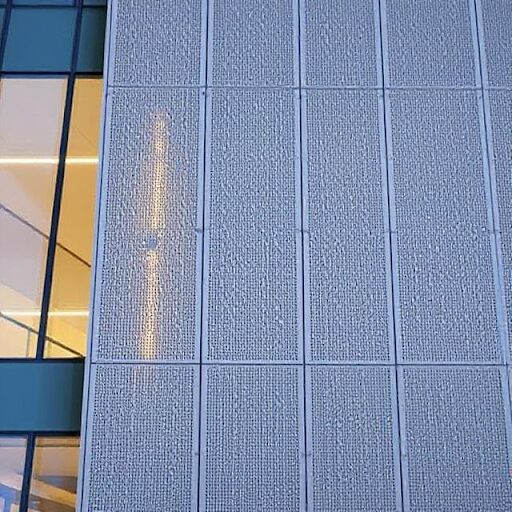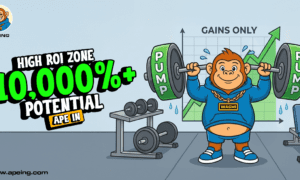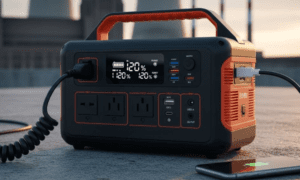The outside of a building does more than outline the inside—it acts as an important link between the building and nature. It shields, shares who we are and also affects the way people interact with cities. The concept of a building’s face in architecture has developed into an advanced system focused on making things attractive, efficient and environmentally friendly.
High-tech materials and how they are designed are working hard to make our environment more impressive and effective. It stands without doubt in many places, holding up well over the years, through all kinds of weather and city life. But what is it? Let’s discuss this in detail!
From Solid Walls to Smart Skins: A Paradigm Shift in Architecture
During years past, the outside walls of buildings were made mostly to resist weather and protect against the elements. At present, this way of working is turning into something incredibly flexible and smart. Many architects and designers are now choosing to use “smart skins” that are lightweight and breathable and more than simply cover a room.
With these new types of facades, buildings can air out easily, maintain the right temperature and coexist nicely with the environment. Because of this, architects now use art and technology together to build structures that remain strong even as they are pleasing to see. As well as saving energy, they use the available sun and air to enhance the urban environment with interesting shapes and textures.
Smart metal curtain panels are not just more advanced; they also reflect a new thinking about the way buildings engage people and the world outside.
What Makes Perforated Metal Curtain Wall Panels So Special?
Perforated metal curtain wall panels have quietly emerged as a game-changer in modern architecture. While most solids walls only focus on strength, these panels achieve both that and a stylish result with good ventilation. The special perforated shapes they have help break up a building’s surface, giving every structure a unique and refined touch. As well as making buildings beautiful, these panels filter light, decrease glare, support proper ventilation in the building and protect it from extremes of weather due to being light yet strong.
Because of this balance, curtain walls are suited to areas such as big cities, where they can work well and safely in all types of weather. Moreover, the holes in perforated metal panels let in natural light, helping control the building’s temperature and saving on HVAC expenses. Such products are flexible, allowing customers to modify patterns, doors and finishes to match their personal uses and architecture.
Folding Function into Form: From Facade to Furniture:
The design process includes both the outside and the inside, since optimizing space is now important in urban areas. Just as perforated metal curtain wall panels transform façades with a balance of style and utility, the humble folding bed redefines interior functionality by offering a flexible solution to limited space. Folding beds exemplify the art of clever engineering, allowing rooms to shift effortlessly between uses.
Since they can be built into the wall, they are comfortable and still keep the room looking attractive. This flexibility is much like the concept beneath modern façades, allowing every part to provide defense, ventilation, view, as well as provide flexibility, comfort and efficiency within the building. This link between these two design factors points to a wider change: now, form and function are considered together. Instead such ideas combine to provide answers that meet the requirements of today.
The flexibility found by using folding in architecture and furniture keeps spaces just as adaptable as the ones who use them.
Invisible Yet Essential: The Role of Curtain Wall Panels in Building Performance
Curtain wall panels, including the perforated metal versions, may be recognized for their appearance but, more importantly, they provide key functions that improve a building’s performance.
These panels are the primary protectors against the environment, helping control temperature levels, restrict sunlight and prevent your house from getting damaged by the weather. The holes are found in the design for a reason—to encourage natural ventilation and reduce our reliance on air conditioning. As a result, the air inside buildings improves and there will be greater comfort for those inside, encouraging healthier living and working conditions. Besides, they help make the building last longer and are easier to maintain.
Covering sensitive areas helps protect the building from the effects of rain, wind and UV rays which adds years to its usefulness and saves the owner’s money on repairs.
Supporting Urban Density Without Compromising Comfort:
With space in cities getting tighter as they grow, it’s harder to make living or working environments feel comfortable or roomy. Innovative architectural solutions like perforated metal curtain wall panels play a vital role in meeting this challenge. These panels let buildings have fresh air and good lighting, making sure people living in cities get healthy air and sunshine.
At the same time, space-saving interior solutions, such as folding beds, complement this approach by maximizing usable area without sacrificing comfort. Both of these approaches help turn crowded areas into comfortable neighborhoods. Merging smart outside materials with adjustable inside furniture allows architects to avoid making spaces feel claustrophobic.
The combination of new façade features and flexible furniture shows that city development can be comfortable and efficient at the same time.
Conclusion:
As urban architecture develops, combining looks, usefulness and comfort has become absolutely necessary. Perforated metal curtain wall panels offer a sophisticated solution, combining durability, ventilation, and visual appeal to enhance building performance and identity. Meanwhile, innovative interior elements like folding beds maximize space without compromising livability.
All of these innovations in design are part of a trend to make cities more flexible and able to meet modern living needs. Increasing urban density means that combining different technologies is essential for developing buildings that support people.





























